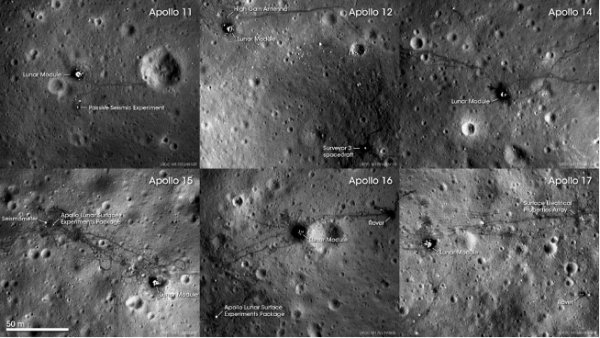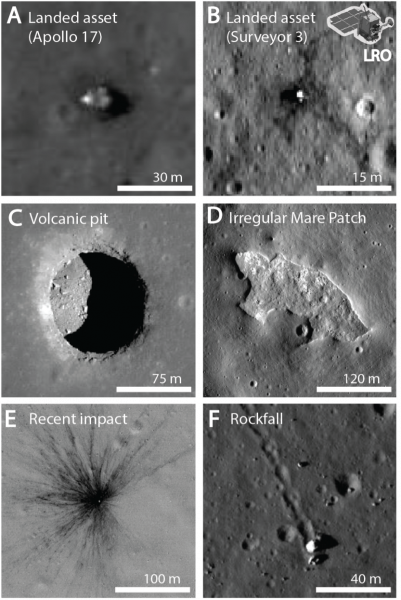Unveiling the Moon’s Mysteries: A Leap in Planetary Science through AI
The Moon has always been a beacon of curiosity and exploration for humanity. From the historic Apollo landings to the continuous orbit of the Lunar Reconnaissance Orbiter (LRO), our quest to understand our closest celestial neighbor has never waned. However, the sheer volume of data collected by missions like the LRO – millions of images – presents a formidable challenge: how can we efficiently sift through petabytes of lunar imagery to uncover the Moon’s hidden secrets? This is the question that Valentin Bickel, Daniel Angerhausen and Adam Lesnikowski set out to answer in their TIP supported program, leading to significant advancements in the use of artificial intelligence (AI) for planetary science.
The genesis of this project – a PlanetS success story
The project was initially conceived at the SETI Institute during Daniel Angerhausen’s TIP sponsored externship with Google Cloud at the NASA Frontier development lab. Originally it aimed at identifying the Apollo landing sites using machine learning in the context of finding Technosignatutes. Soon after, Co-I Valentin Bickel became a CSH fellow and a PlanetS member partly through this original connection. As his and the team’s research unfolded, it became apparent that the potential applications extended far beyond locating historical human or potential extraterrestrial artifacts. The team’s AI model, leveraging deep generative visual models, has the capability to autonomously detect a wide array of anomalous geological features, such as volcanic pits, fresh impact craters, rockfalls, and even cave entrances. This marks the first-ever deployment of an anomaly detection system specifically designed for planetary images, filling a critical capability gap in the field of planetary science.

Fig.1: The six Apollo landing sites as imager by LROC (Image source: NASA SVS – svs.gsfc.nasa.gov/31052/).
A Technological Marvel: The AI Model
The AI model developed by Lesnikowski, Bickel and Angerhausen represents a significant leap forward in the analysis of planetary imagery. By employing variational autoencoders, the model can rapidly identify scientifically significant instances within the LRO’s surface imagery with unprecedented efficiency. This method not only provides an average precision improvement between 2 to 327 times compared to manual review but also operates over a thousand times faster. Such efficiency opens the door to ultra-large scale processing of lunar data, enabling scientists to focus on more creative and complex tasks without succumbing to the fatigue of repetitive analysis.

Fig.2: Notable human-made and geologic features of high scientific and/or strategic value considered in this work, as imaged by LRO NAC (LRO shown as inset): A & B) landed assets, C) volcanic pits (skylights), D) irregular mare patches (IMPs), E) fresh impact craters, F) rockfalls (displaced boulder with associated track). Taken from the paper that was published in this project.
Beyond the Moon: A Vision for the Future
The implications of this research extend far beyond the Moon. The team envisions applying their method to other large planetary remote-sensing datasets, potentially revolutionizing our understanding of other celestial bodies. Furthermore, the project has sparked interest in the commercial sector, with potential applications in lunar prospecting and the identification of strategic targets for future exploration missions. Collaborations with industry partners are already under discussion, highlighting the commercial viability of this innovative technology.
Acknowledgments and Future Directions
This project’s success would not have been possible without the support of the Technology & Innovation Platform of NCCR PlanetS and Google Cloud. As the team looks to the future, they plan to scale their model to cover the full lunar surface and beyond, with proposals already submitted for further funding. The ultimate goal is to create global-scale maps of anomalous and rare lunar surface features, unlocking new insights into our Moon’s history and geologic evolution, while enabling future missions.
Conclusion
This TIP project represents a significant milestone in the intersection of AI and planetary science. By harnessing the power of machine learning, it has opened new pathways for exploration and understanding of the Moon and potentially other planets. As we stand on the brink of a new era in space exploration, projects like these underscore the vital role of innovation and collaboration in unraveling the mysteries of our universe.
For more information on this transformative project, visit the official publication in IEEE JSTARS and explore the detailed findings of the “Automated Discovery of Anomalous Features in Ultralarge Planetary Remote-Sensing Datasets Using Variational Autoencoders.”
Contacts
PlanetS partners: Daniel Angerhausen, Valentin Bickel
Non-PlanetS partner: Adam Lesnikowski

